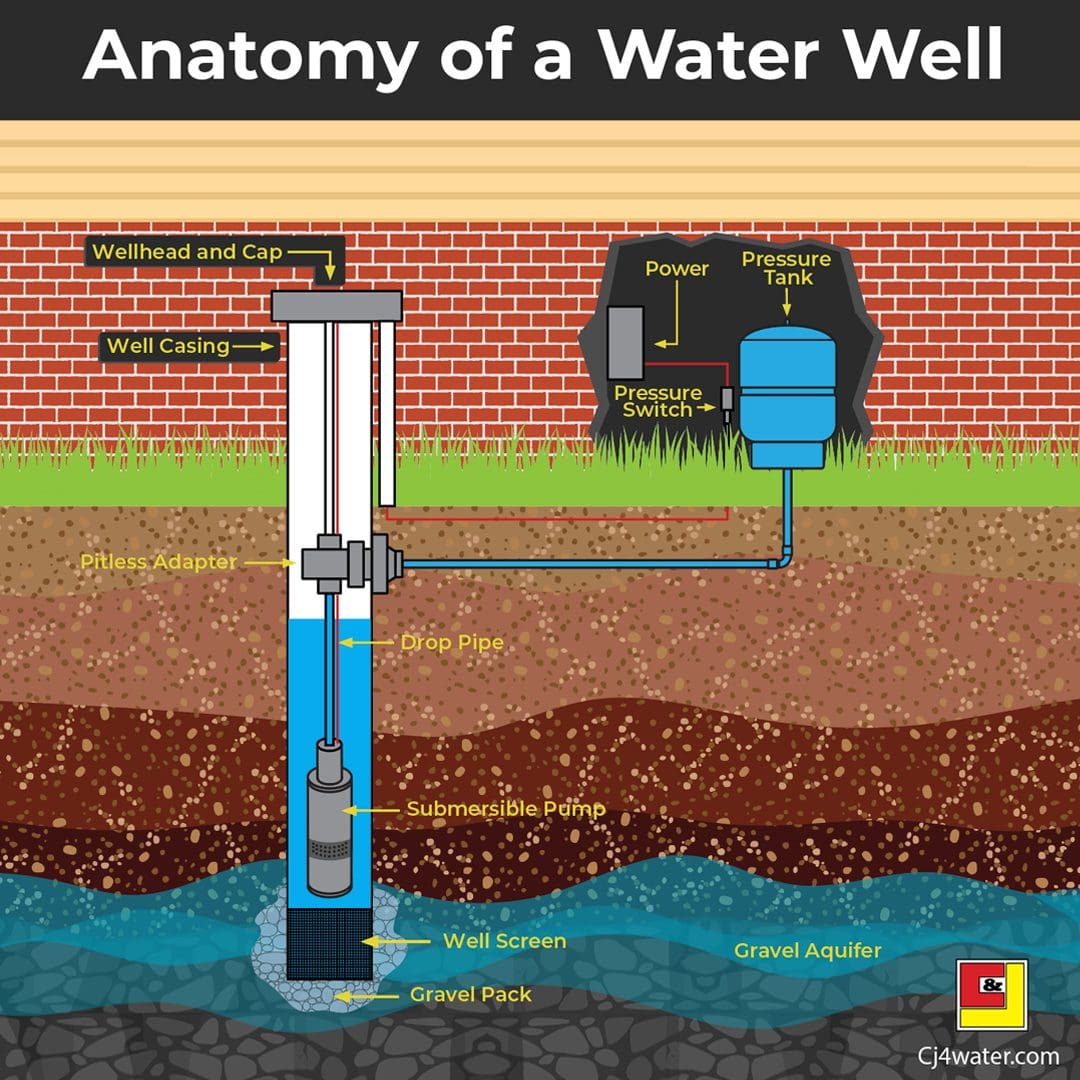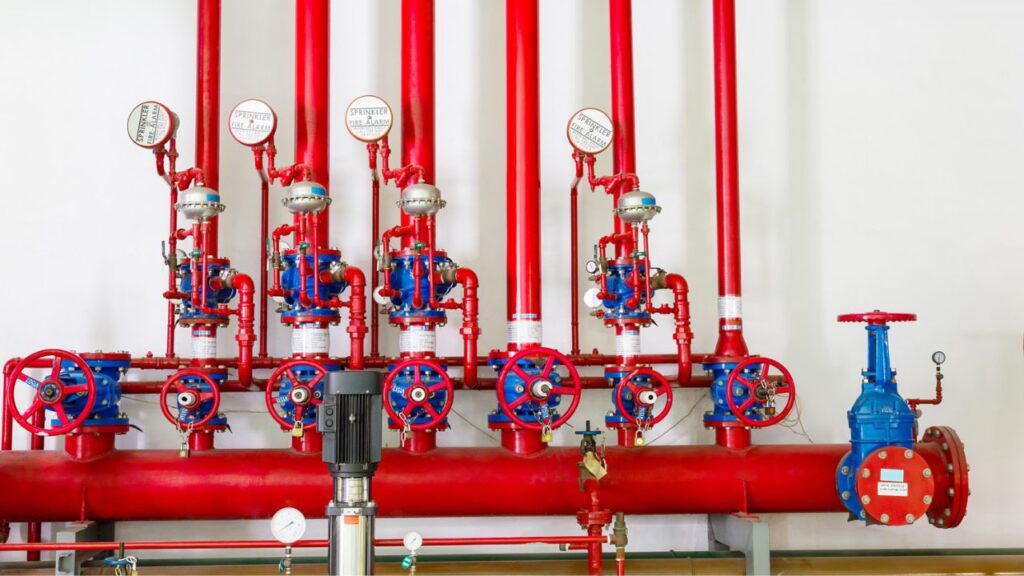A Closer Look at The Layout of Your House's Plumbing System
A Closer Look at The Layout of Your House's Plumbing System
Blog Article
On this page underneath yow will discover some excellent ideas pertaining to The Inner Workings of Your Home's Plumbing.

Understanding exactly how your home's pipes system functions is important for each house owner. From supplying tidy water for drinking, food preparation, and showering to safely eliminating wastewater, a properly maintained pipes system is essential for your household's health and wellness and convenience. In this thorough overview, we'll explore the elaborate network that comprises your home's pipes and deal tips on maintenance, upgrades, and managing usual issues.
Introduction
Your home's plumbing system is greater than simply a network of pipelines; it's a complex system that ensures you have access to clean water and reliable wastewater removal. Knowing its components and how they collaborate can assist you stop pricey repairs and ensure everything runs smoothly.
Fundamental Parts of a Pipes System
Pipelines and Tubes
At the heart of your pipes system are the pipelines and tubes that lug water throughout your home. These can be constructed from various products such as copper, PVC, or PEX, each with its benefits in regards to longevity and cost-effectiveness.
Components: Sinks, Toilets, Showers, and so on.
Components like sinks, commodes, showers, and bath tubs are where water is made use of in your home. Recognizing just how these fixtures connect to the plumbing system aids in detecting problems and planning upgrades.
Valves and Shut-off Factors
Shutoffs regulate the flow of water in your plumbing system. Shut-off valves are important throughout emergency situations or when you require to make repairs, allowing you to isolate parts of the system without interrupting water circulation to the whole residence.
Water Supply System
Main Water Line
The main water line links your home to the local supply of water or a personal well. It's where water enters your home and is distributed to different fixtures.
Water Meter and Pressure Regulatory Authority
The water meter actions your water use, while a pressure regulator ensures that water flows at a secure stress throughout your home's plumbing system, avoiding damages to pipes and fixtures.
Cold Water vs. Hot Water Lines
Recognizing the distinction in between cold water lines, which supply water directly from the major, and warm water lines, which carry warmed water from the hot water heater, assists in troubleshooting and preparing for upgrades.
Water drainage System
Drain Pipes and Traps
Drain pipelines bring wastewater away from sinks, showers, and toilets to the sewage system or septic tank. Traps prevent sewage system gases from entering your home and likewise trap particles that might cause obstructions.
Ventilation Pipes
Air flow pipelines enable air into the water drainage system, stopping suction that could reduce drain and cause catches to empty. Correct ventilation is essential for keeping the stability of your plumbing system.
Importance of Appropriate Water Drainage
Making sure proper water drainage avoids back-ups and water damage. Regularly cleaning up drains pipes and preserving traps can prevent expensive repairs and prolong the life of your plumbing system.
Water Heater
Types of Hot Water Heater
Water heaters can be tankless or standard tank-style. Tankless heaters warm water as needed, while storage tanks keep warmed water for immediate usage.
How Water Heaters Link to the Pipes System
Comprehending just how water heaters link to both the cold water supply and hot water distribution lines aids in diagnosing problems like insufficient hot water or leakages.
Upkeep Tips for Water Heaters
Routinely flushing your water heater to eliminate sediment, inspecting the temperature setups, and examining for leakages can extend its lifespan and enhance energy effectiveness.
Usual Plumbing Concerns
Leaks and Their Reasons
Leaks can take place due to maturing pipes, loosened fittings, or high water stress. Addressing leakages promptly stops water damages and mold development.
Clogs and Obstructions
Blockages in drains and bathrooms are commonly brought on by flushing non-flushable items or an accumulation of oil and hair. Making use of drainpipe screens and being mindful of what decreases your drains pipes can protect against obstructions.
Signs of Plumbing Issues to Expect
Low water stress, slow-moving drains, foul odors, or uncommonly high water costs are signs of prospective pipes problems that ought to be resolved promptly.
Plumbing Upkeep Tips
Normal Evaluations and Checks
Arrange yearly pipes evaluations to capture concerns early. Look for signs of leaks, deterioration, or mineral build-up in taps and showerheads.
Do It Yourself Maintenance Tasks
Easy tasks like cleansing tap aerators, looking for toilet leaks using dye tablets, or insulating exposed pipelines in cool environments can protect against significant pipes problems.
When to Call an Expert Plumbing
Know when a pipes concern calls for specialist know-how. Trying complicated repair services without appropriate expertise can result in more damages and greater repair service expenses.
Upgrading Your Plumbing System
Factors for Updating
Updating to water-efficient fixtures or replacing old pipelines can boost water high quality, decrease water bills, and increase the worth of your home.
Modern Pipes Technologies and Their Benefits
Explore technologies like clever leakage detectors, water-saving bathrooms, and energy-efficient water heaters that can conserve cash and decrease environmental influence.
Price Considerations and ROI
Calculate the ahead of time expenses versus long-lasting savings when taking into consideration pipes upgrades. Numerous upgrades spend for themselves with decreased utility costs and less repair services.
Environmental Influence and Preservation
Water-Saving Fixtures and Devices
Setting up low-flow faucets, showerheads, and commodes can substantially decrease water use without compromising performance.
Tips for Lowering Water Usage
Simple routines like fixing leakages promptly, taking much shorter showers, and running full lots of laundry and recipes can save water and lower your energy bills.
Eco-Friendly Pipes Options
Consider lasting plumbing products like bamboo for flooring, which is durable and green, or recycled glass for countertops.
Emergency situation Preparedness
Actions to Take During a Pipes Emergency
Know where your shut-off valves are located and just how to shut off the water supply in case of a ruptured pipe or major leakage.
Significance of Having Emergency Calls Useful
Maintain get in touch with information for neighborhood plumbing technicians or emergency solutions readily offered for quick feedback during a plumbing dilemma.
DIY Emergency Situation Fixes (When Appropriate).
Momentary fixes like making use of duct tape to spot a leaking pipeline or placing a pail under a leaking tap can reduce damages until a specialist plumber shows up.
Verdict.
Understanding the composition of your home's pipes system encourages you to maintain it efficiently, conserving money and time on repairs. By complying with normal upkeep regimens and remaining informed regarding contemporary plumbing innovations, you can guarantee your pipes system runs successfully for years to come.
HOW YOUR PLUMBING SYSTEM WORKS
Which Pipes Do What?
Blue lines = fresh water supply entering the building
Red lines = hot water supply entering the building
Grey lines = pipes carrying waste away from the building and venting pipes carrying gases away from the building (through the roof)
YOUR MAIN PLUMBING SYSTEMS
There are two main plumbing systems that support your home s basic plumbing needs one that brings clean water into your home, and one that sends dirty water away from your home. Connected to the toilet, bath, shower, and other faucets in your home, these two systems keep your water flowing in the right directions.
ACCESSING FRESH WATER
Fresh and clean water is brought into your home through the main water supply line . Filtered through one pipe, this water is pressured to flow into the various fixtures in your home at any given time.
This water can be sourced from a well located on your property, a pond or river (mostly cottages), or, as in most cases, from the city s municipal water treatment centre. However, it is important to note that water that is untreated, such as the water siphoned from ponds or rivers, may not be safe to drink. Personal water supplies always need to be treated for hardness and contaminants before consumed.
MUNICIPAL WATER SUPPLIES
Improve taste and odour
Remove sediment
Eliminate hardness
Reduce chlorine
COLD WATER SUPPLY VS. HOT WATER SUPPLY
Cold water flows into your home or building through the service line, which then distributes hot or cold water to your fixtures. This line is most commonly run through a central column that runs floor to floor. Hot water runs in short and straight pipes as the longer the pipeline, the more heat that will be lost in the transfer. Having shorter pipes also allows residents to access hot water more quickly.
WASTE WATER SYSTEM
Your wastewater system is divided into two parts pipes that send wastewater away from your home and venting pipes that send sewer gas away from your home. Sewage water travels through pipes that flush the water and waste towards local sewers that are operated and managed by your city or town. Most sewer systems rely on gravity to move the wastewater to where it needs to go.
The further away from your toilet or sink, the larger wastewater pipes become. This allows for waste to be disposed of from various parts of your home or business at once without pipe blockages. The angle and flow of these pipes are also essential for keeping your waste pipes clear of build up.
https://harrisplumbing.ca/how-your-home-plumbing-system-works/

HOW YOUR PLUMBING SYSTEM WORKS
Which Pipes Do What?
YOUR MAIN PLUMBING SYSTEMS
There are two main plumbing systems that support your home s basic plumbing needs one that brings clean water into your home, and one that sends dirty water away from your home. Connected to the toilet, bath, shower, and other faucets in your home, these two systems keep your water flowing in the right directions.
ACCESSING FRESH WATER
Fresh and clean water is brought into your home through the main water supply line . Filtered through one pipe, this water is pressured to flow into the various fixtures in your home at any given time.
This water can be sourced from a well located on your property, a pond or river (mostly cottages), or, as in most cases, from the city s municipal water treatment centre. However, it is important to note that water that is untreated, such as the water siphoned from ponds or rivers, may not be safe to drink. Personal water supplies always need to be treated for hardness and contaminants before consumed.
MUNICIPAL WATER SUPPLIES
COLD WATER SUPPLY VS. HOT WATER SUPPLY
Cold water flows into your home or building through the service line, which then distributes hot or cold water to your fixtures. This line is most commonly run through a central column that runs floor to floor. Hot water runs in short and straight pipes as the longer the pipeline, the more heat that will be lost in the transfer. Having shorter pipes also allows residents to access hot water more quickly.
WASTE WATER SYSTEM
Your wastewater system is divided into two parts pipes that send wastewater away from your home and venting pipes that send sewer gas away from your home. Sewage water travels through pipes that flush the water and waste towards local sewers that are operated and managed by your city or town. Most sewer systems rely on gravity to move the wastewater to where it needs to go.
The further away from your toilet or sink, the larger wastewater pipes become. This allows for waste to be disposed of from various parts of your home or business at once without pipe blockages. The angle and flow of these pipes are also essential for keeping your waste pipes clear of build up.
https://harrisplumbing.ca/how-your-home-plumbing-system-works/
I'm very fascinated by Understanding Your Home's Plumbing Anatomy and I hope you enjoyed reading the entire piece. Are you aware of another individual who is excited by the subject? Take a moment to promote it. Many thanks for taking the time to read it.
Set An Appointment Report this page